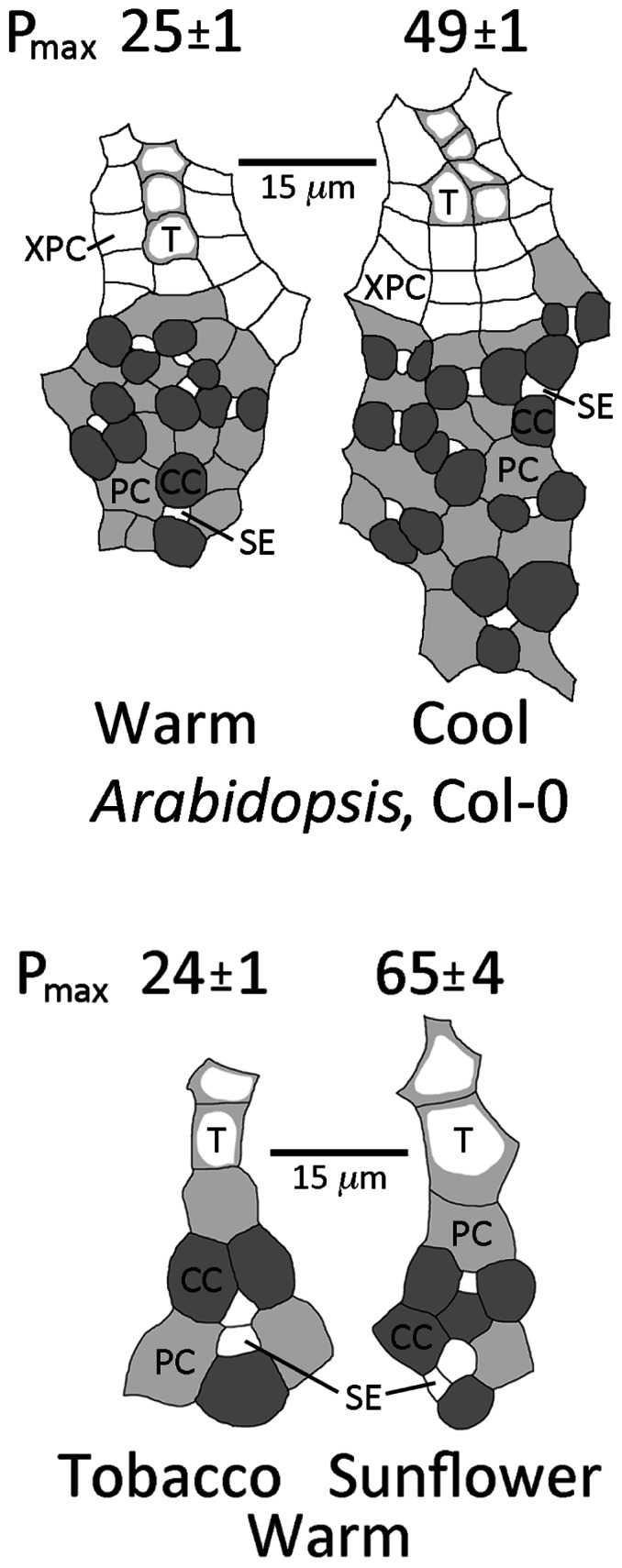FIGURE 2.
Sketches of representative minor loading veins from fully expanded leaves of the winter annual Arabidopsis thaliana Col-0 grown under a 9-h photoperiod of 400 μmol photons m–2 s–1 at an average day/night leaf temperature of 25°C/20°C (warm) or 14°C/8°C (cool) and from fully expanded leaves of the summer annuals tobacco and sunflower grown under a 9-h photoperiod of 1000 μ mol photons m–2 s–1 at an average day/night leaf temperature of 25°C/20°C. Filled dark gray cells are companion cells (CC; 12 and 19 cells in the warm and cool veins of A. thaliana, respectively), filled light gray cells are phloem parenchyma cells (PC), small white cells within the gray cells are sieve elements (SE; 6 and 9 cells in the warm and cool veins of A. thaliana, respectively), cells with light gray adjacent to the cell walls are tracheids (T; 3 and 5 cells in the warm and cool veins of A. thaliana, respectively), and large white cells around the tracheids are xylem parenchyma cells (XPC). Photosynthetic capacities (light- and CO2-saturated rates of oxygen evolution, P max in μmol O2 m-2 s-1) ± standard deviation obtained from one leaf from each of four plants (n = 4) per growth condition provided above each sketch. Mean photosynthetic capacities between A. thaliana leaves grown at the two temperatures, and between tobacco and sunflower leaves grown under the common conditions, were significantly different at p < 0.001 (Student’s t-test).

